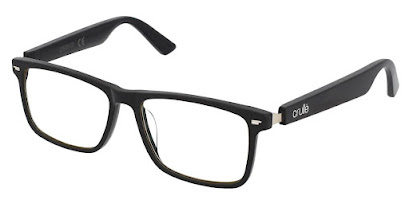Innovation through creativity in product management
What is a product, or service? It is a tool that solves a problem. So, we should keep in mind that the very next time we think of a product as a “cool idea” — does it solves any problem?
Adobe Research has a great definition on this topic: “Creative problem solving is the process of redefining problems and opportunities, coming up with new, innovative responses and solutions, and then taking action.” [1]
Of course, we can talk about products that do not solve any problem because there is no problem to be solved. Those kinds of products are the ones that perhaps add additional value to something greater. But still, I do believe that even those kinds of products should be about a problem, like intentionally creating a problem to solve the same with another tool — creating demand. Regarding the latter — Apple reinvented the phone. At the time, we all had a phone and our problem was non-existing. But, with added value in the form of new capabilities, all of a sudden, we all started using the phone for other things as well (playing games, listening to music, etc.). To get back to the problem solving — suddenly we got ourselves facing the “problem” that, for example, it is not practical to surf the web only on a desktop computer, I need to get the information anytime and anywhere, and the solution is — with my phone, and a demand for more powerful devices is created.
Speaking of innovations in the field of tourism, a new concept is emerging — the experience economy [2].
In business, innovation might be expressed through competitiveness. To keep competitiveness companies need to develop their services, but they could enter the shared economy bandwagon. A shared economy can provide added value, shorten time-to-market, lower the costs, but also keep in mind that there is still a problem with the grey economy.
Going on our own, first, we need to identify which of the services are at risk of a potential shared economy player that could potentially emerge, and then we need to find an answer to the threat. It is a constant struggle which leads to a question — is it worth all the trouble? Might be, if the company is big enough, an enterprise which is building an ecosystem of their own for example.
[1] Adobe Research, „Creative Problem Solving“, http://cps.adobeeducate.com/, Accessed on October 11th 2019.
[2] Pencarelli T, Splendiani S, Rivetti F, Migliaccio M, „Creativity and Innovation in Tourism: The Role of Events“, https://www.researchgate.net/publication/282647308_Creativity_and_Innovation_in_Tourism_The_Role_of_Events, Accessed on 30th November 2019.
[3] Enders A, „The sharing economy: ‘Upending business as usual’“, https://www.imd.org/research-knowledge/articles/the-sharing-economy-upending-business-as-usual/, Accessed on November 28th 2019.
Looking from the perspective of IT service in the tourism domain for example, the sharing economy includes: monetized and non-monetized home-sharing, home exchange, community tourism services, co-working offices, and other services [4].
Innovation is usually visualized using the S-Curve which shows the transformation of a product over some time. It is also used to define the level of product maturity and adoption, which can be used to send a signal — it is time for something new. As an example of a technological S-curve, the following figure might be the one that best illustrates product adaptation, historically:
One thing to keep in mind when planning product upgrade, like from the previous S-curve example — a change in part of the system is usually not isolated but has an effect on changing the associated processes in the immediate environment. So, we shouldn’t just look at our product but also other connected elements as well.
Can we somehow improve our creativity to be recognized as innovators? Sure, creativity is a skill, and skills can be improved. Using the following figure we can identify ourselves and then see what else we need to encourage our creativity:
[4] PwC, „Sharing or paring? Growth of the sharing economy“, https://www.pwc.com/hu/en/kiadvanyok/assets/pdf/sharing-economy-en.pdf, Accessed on November 28th 2019.
[5] Gal, „The Innovation S-Curve“, http://www.galsinsights.com/the-innovation-s-curve/, Accessed on November 28th 2019.
[6] Amabile, 1983., https://www.researchgate.net/figure/Components-of-creative-performance-Source-Amabile-1983_fig9_331033398, Accessed via Research Gate on October 11th 2019.
One more skill that goes well along with creativity is critical thinking. Always make a challenge, not only towards others but also towards our thoughts. Creativity might also be defined as the ability to ask the right questions.
„Never assume, because when you assume, you make an ASS of U and ME.“
— Jerry Belson
To sum up — knowledge, creativity, and innovation are closely linked and feed each other in a potentially infinite process, as shown in the following figure:
[7] Pencarelli T, Splendiani S, Rivetti F, Migliaccio M, „Creativity and Innovation in Tourism: The Role of Events“, https://www.researchgate.net/publication/282647308_Creativity_and_Innovation_in_Tourism_The_Role_of_Events, Accessed on 30th November 2019.







Comments
Post a Comment
Respect...